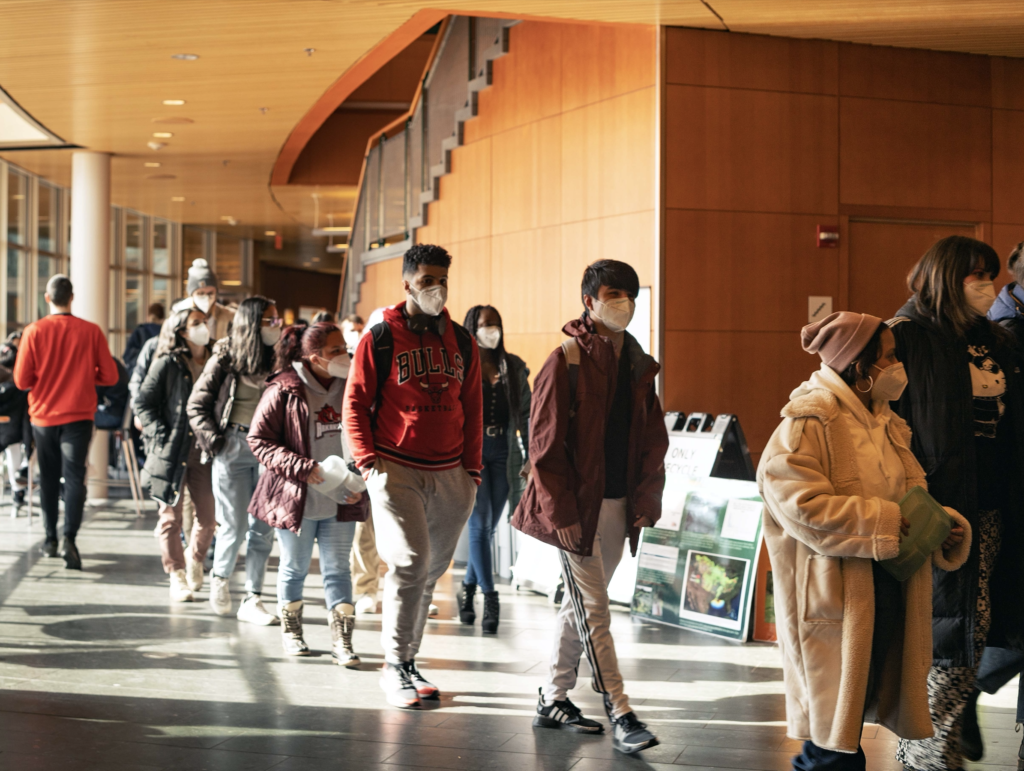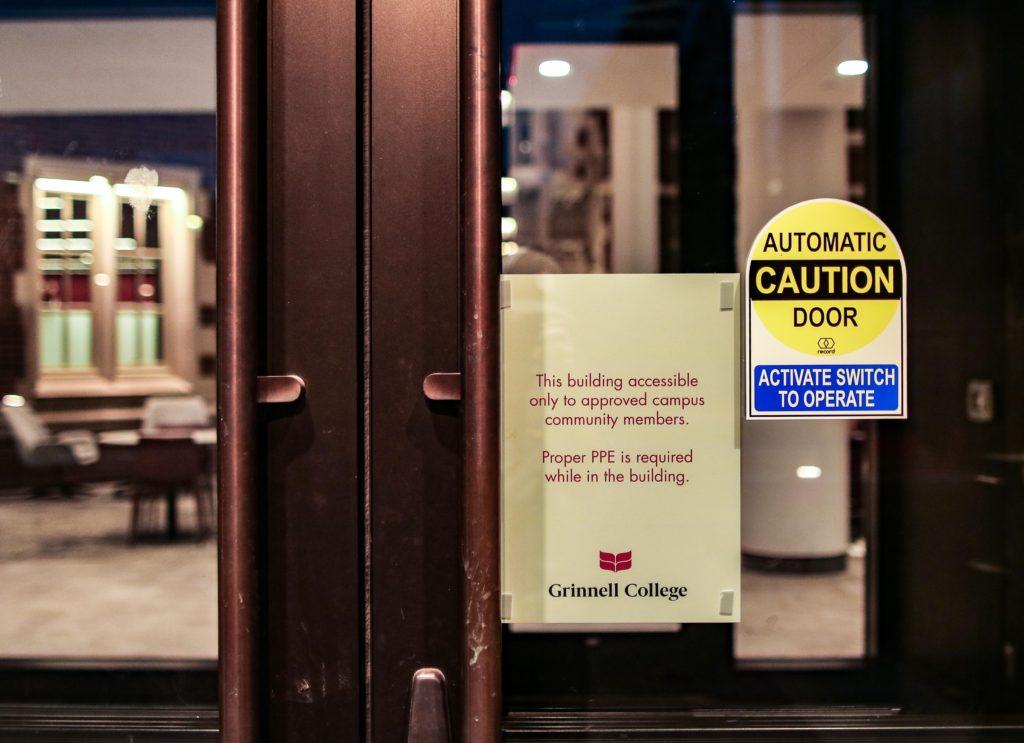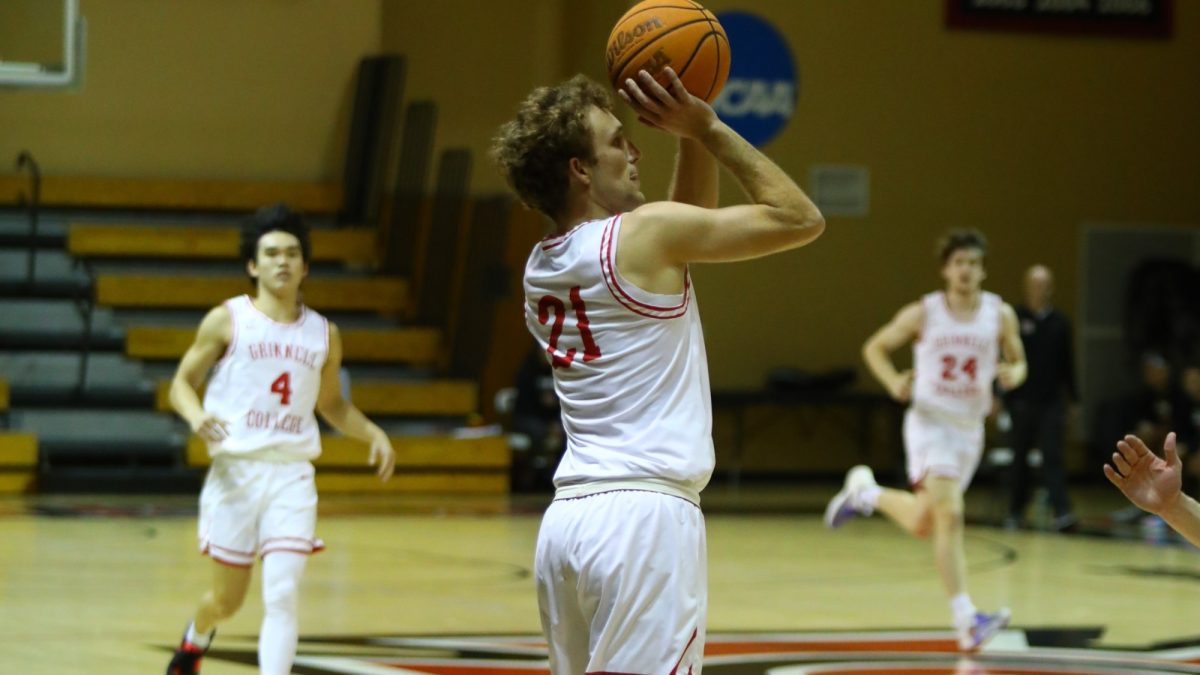The 2022 spring semester began at Grinnell College with nearly two weeks of exclusively to-go meals from the Marketplace Dining Hall, leaving many to search for spaces on campus to eat. Feb. 3 marked the first day where tables in the dining hall were open for eat-in seating.
Ben Newhouse, associate vice president for student affairs and dean of students, cites the low COVID positivity rate after the initial onboarding testing (a rate of 3.6 percent) as the reason to resume eat-in dining.
Although the closing of Dining Hall tables was meant to prevent the spread of the omicron variant of the virus, some students found that this may have created more opportunities for COVID to spread. Instead of eating in the Dining Hall, students crowded into the Spencer Grill or residence hall lounges around campus.
“It’s just congested. You know, we’re talking about the sickness, and yet we’re allowing ourselves to be bunched up in smaller rooms instead of wider spaced in a bigger room,” said E.J. Schwartz `23.
Some students found that the to-go policy was counterproductive because of the lack of enforcement of eating unmasked around campus. “When there are those really crowded moments, it makes the whole rule of not eating in D-Hall seem kind of ridiculous. If there’s still going to be the same concentration of people for sure,” said Maia Battis-Wyatt `23 before eat-in dining resumed.
Beyond eating unmasked, students have noticed the lack of mask-wearing in other places around campus, particularly in residence halls. “COVID is being spread not just through, like, food. I see people in residence halls without masks and like socializing. So, I don’t think it [the Dining Hall] would affect it,” said Sophie Mero `22.
Along with what these students feel is the contradictory nature of the to-go Covid policy, the lines and wait times have proven to be inconveniently long.
“On a few days, I have a class that gets out at noon and a class that starts at one,” said Battis-Wyatt. “When there’s these ridiculous lines that there have been sometimes it’s almost impossible for me to actually go back to my dorm and eat.”
Erin Jarvis `25 also had trouble eating lunch with the long lines. “Oh, they’ve [the lines] been terrible. I have 11 to 12 class and a 1 to 2 class. So trying to get lunch in that one hour in between has been awful,” she said.
When the lines were at their worst, some students skipped out on the to-go box altogether. “I came here once on the day that it like looped all the way around like back to the grill. And I decided not to wait in the line,” said Alyson Won `25.
In addition, to the stress of the long lines for both students and the dining hall staff, the to-go policy also put an extra strain on the custodial staff, as they became responsible for also cleaning the various places students were eating on campus.
Although the reopening of eat-in dining may ease the pressure for the FM staff, the Dining Hall staff had to readjust its operations. Currently, the Marketplace has shifted to using disposable dishes and silverware to reduce this initial burden. Once the staff can manage the change and increase in dishware there will be a return to reusable dishes and silverware, according to Newhouse.
“Part of the transition is reallocating, you know, resources to support the eat-in,” said Newhouse. “In terms of just the maintenance of a large dining space, and, you know, the plate usage of the dish usage that goes up with, with, eat-in experience, that’s the stuff that’s going to have to be adjusted in order to meet those needs and address those dynamics.”
Some students also worry about how the reopening of eat-in dining will affect the staffing. “I feel like it’s going to be probably more low staffed,” said Wheaton Kearney `24. “It’s going to be better than taking stuff out of the hall at least.”





























































